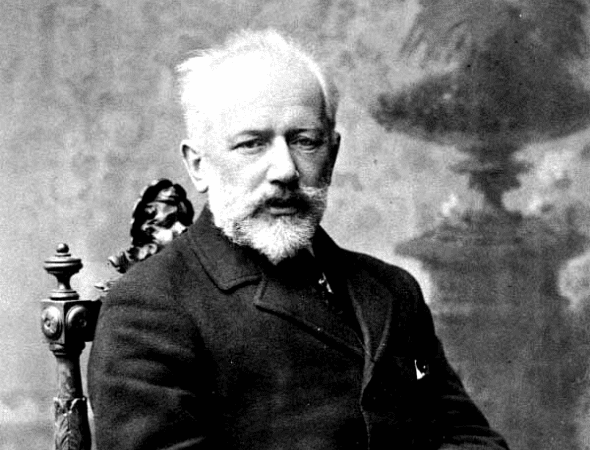TCHAIKOVSKY: Symphony No. 2
by Jeff Counts
THE COMPOSER – PIOTR ILYCH TCHAIKOVSKY (1840-1893) – Tchaikovsky was on summer “vacation” in Ukraine when he began work on his 2nd Symphony in 1872. He had recently completed his third opera, The Oprichnik, based on a tragic historical novel from the time of Ivan the Terrible, and had also been moonlighting of late as a music critic for Moscow’s Russian Register. Peace and quiet was very much in order, but he continued to work. Tchaikovsky’s letters from later that year show that he was excited about the piece but that it required his undivided attention. To his father in December he wrote, “My new symphony…thank God, is finished” and later added “…I am now resting.” Finally.

THE HISTORY – Tchaikovsky was particularly affected by the folk music of Ukraine, which is why the unfortunate nickname of his Symphony No. 2 must be briefly addressed. “Little Russia” was the only legal way to refer to the region between 1863 and 1905, thanks to the Russian Tsar, and the phrase is just as offensive to Ukrainians now as it probably was then. It is important to note, especially today, that Tchaikovsky never applied the moniker himself. That was Nikolai Kashkin, another music critic, and he did so only when the composer was three years dead and unable to comment. Thankfully, nobody really uses it anymore. Though Tchaikovsky referenced folk music on occasion in his symphonic creations, he never did so as thoroughly as in the 2nd Symphony. Three of the four movements quote folksongs literally. “Down the Mother Volga” is used in the first, “Spin, O My Spinner” in the second with “The Crane” serving as the theme for a set of highly creative variations in the fourth. The premiere met with considerable success for Tchaikovsky, who reacted with equally considerable modesty, even giving credit (for the popular “Crane” sections) to the elderly steward who hummed it constantly while the composer worked. Some of his reluctance to fully acknowledge the public adoration of the piece might have been due to his own growing harsh judgment of it. He revised it extensively in 1879 and hoped to “turn this immature and mediocre symphony into a good one.” The first movement was essentially re-composed, the scherzo re-orchestrated and the finale shortened significantly. The Symphony received its second “premiere” in 1881 and enjoyed a similarly positive reaction from the audience. More importantly, Tchaikovsky was finally happy with it. In an interesting and fortunate twist of fate, the full score of the original version was never published thanks to some initially frustrating delays, delays that ultimately allowed Tchaikovsky to keep the earlier (and according to him, lesser) version to himself.
THE WORLD – Elsewhere in 1872, Through the Looking Glass was published by Lewis Carroll, Yellowstone National Park was founded and King Kamehameha V died in Hawai’i, ending the 62-year reign of his House.
THE CONNECTION – Karina Canellakis was the last conductor to lead the Utah Symphony in a performance of Tchaikovsky’s Symphony No. 2. The year was April 2018.











